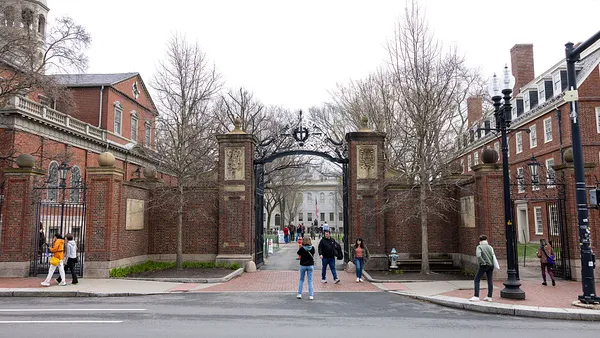The higher education sector has not escaped the effects of the coronavirus, which has forced many institutions to close classrooms, move instruction online and empty residence halls.
Administrators anticipate their colleges will take a financial hit as some refund room and board money and create new digital infrastructure to ensure students can complete their work online. Future enrollments have also been called into question, as college leaders fear the economic turmoil the virus created will inhibit students, particularly from overseas, from attending four-year institutions in the U.S.
To remedy financial losses nationwide, Congress passed a $2.2 trillion stimulus package last week that included billions of dollars for higher ed. The precise amount of funding institutions will receive has yet to be determined, but the American Council on Education (ACE) knew its members would be seeking information early and calculated its own estimates.
ACE used the formula outlined in the legislation for how the money would be distributed. It's based on enrollments of two groups of students: full-time students who receive federal Pell Grants and full-time students who do not. The calculation excludes students who were enrolled exclusively in distance learning programs before the pandemic.
The association relied on enrollment data the federal government collected from colleges during the 2017-18 academic year for its calculation. As such, the results are slightly outdated and include some schools that have closed. Some qualifying schools show up on ACE's list as receiving zero funds, which is because information for that institution was not available in the set used. However, the data is the best available metric for making the estimates, which were rounded up to the nearest thousand.
Education Dive analyzed the data to pinpoint the states and institutions that would likely get the most money.
Unsurprisingly, states with sprawling public postsecondary systems — namely California, Texas and New York —were at the top of the list. Public and private colleges with a high number of Pell students also fared well.
While many community colleges cater to low-income students who could be Pell-eligible, most of them don't attend those schools full-time, Daniel Madzelan, ACE's associate vice president for government relations, said in an interview with Education Dive. That means community colleges likely won't benefit from the relief as much as four-year institutions, he said.
Congress earmarked nearly $14 billion for higher ed in the legislation, which is called the Coronavirus Aid, Relief, and Economic Security (CARES) Act. Almost all of that sum, about $12.5 billion, will go to institutions directly, according to the National Association of Student Financial Aid Administrators.
The money will be disbursed to colleges through the existing financial aid system, which should expedite the process, Madzelan said. The formula the U.S. Department of Education is using is based 75% on the full-time enrollment of Pell recipients and 25% on the full-time enrollment of students who don't receive Pell Grants.
Colleges must spend half of the money they get from the CARES Act on emergency grants for students who have been disadvantaged by the coronavirus. The Education Department has not announced when colleges will receive the funding, but Madzelan said ACE is in the midst of contacting officials there to urge them "to move as quickly as possible."
The following charts and tables show how much funding states and institutions could receive based on ACE's analysis:




Public universities projected to receive the most funding
| University of Central Florida | FL | $47,600,000 |
| California State University, Northridge | CA | $47,458,000 |
| Miami Dade College | FL | $47,449,000 |
| Arizona State University (Tempe campus) | AZ | $42,997,000 |
| Florida International University | FL | $42,087,000 |
| California State University, Long Beach | CA | $41,202,000 |
| California State University, Fullerton | CA | $41,088,000 |
| California State University, Los Angeles | CA | $40,067,000 |
| Texas A&M University, College Station | TX | $39,863,000 |
| University of California, Irvine | CA | $39,067,000 |
Private universities projected to receive the most funding
| Brigham Young University (Provo campus) | UT | $33,326,000 |
| New York University | NY | $25,719,000 |
| Universidad Ana G. Méndez (Gurabo campus) | PR | $22,032,000 |
| University of Southern California | CA | $18,681,000 |
| Universidad Ana G. Méndez (Cupey campus) | PR | $18,326,000 |
| Keiser University (Fort Lauderdale campus) | FL | $17,049,000 |
| Universidad Ana G. Méndez (Carolina campus) | PR | $15,814,000 |
| DePaul University | IL | $14,494,000 |
| Boston University | MA | $14,301,000 |
| Liberty University | VA | $13,435,000 |













